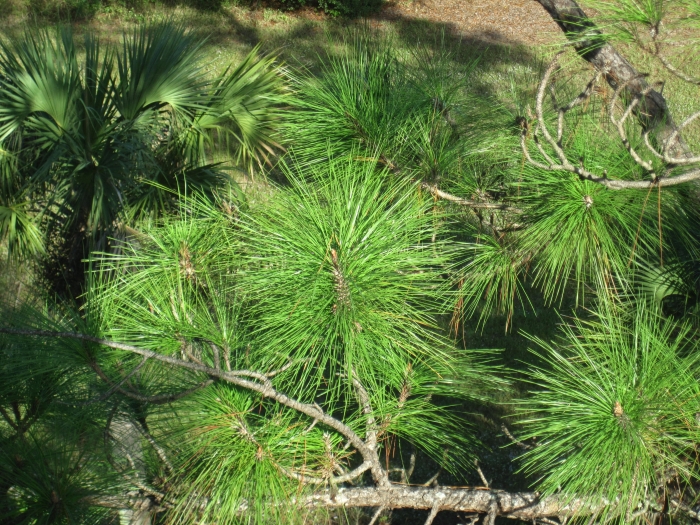Slash Pine
(Pinus elliottii)
Slash Pine (Pinus elliottii)
/
/

James St. John
CC BY 2.0
Image By:
James St. John
Recorded By:
Copyright:
CC BY 2.0
Copyright Notice:
Photo by: James St. John | License Type: CC BY 2.0 | License URL: https://creativecommons.org/licenses/by/2.0 | Uploader: Ser Amantio di Nicolao | Publisher: Wikimedia Commons | Title: Pinus_elliottii_(slash_pine)_(Fort_Myers,_Florida,_USA)_1_(25800488345).jpg | Notes: {{Information |Description={{en|1=''[[Pinus jeffreyi]]'', Butte Lake, Lassen Volcanic National Park, California 40°33'48"N 121°17'37"W, 1850m altitude. }} |Source=[http://www.flickr.com/photos/butsky/117940









































































Estimated Native Range
Summary
Pinus elliottii, commonly known as Slash Pine, is an evergreen tree native to flatwoods, pond edges, and savannas of the Southeastern USA. It is particularly adapted to fire-prone ecosystems and often regenerates after wildfires. Slash Pine is valued for its high strength, which is superior to many other pine species. This fast-growing tree typically has a lifespan of up to 200 years, reaching heights of 18–30 m (59–98 ft) with a trunk diameter of 0.6–0.8 m (2.0–2.6 ft). The needles are long and slender, typically in clusters of two or three, which is a distinctive feature of this species. The cones are glossy red-brown with a prominent prickle on each scale, adding to its ornamental value.
Slash Pine is appreciated for its rapid growth and utility in timber production. It is also used for reforestation and as a windbreak in rural landscapes. In urban settings, it serves as a specimen tree or for creating tall screens. Despite its size, it can be suitable for larger residential properties. It requires full sun or partial shade, medium amounts of water, and thrives in a variety of soils with medium to slow drainage. While it is not known for a high susceptibility to diseases, it can be affected by pine beetles and fusiform rust. Gardeners should be cautious about its potential invasiveness outside its native range and consult local guidelines before planting.CC BY-SA 4.0
Slash Pine is appreciated for its rapid growth and utility in timber production. It is also used for reforestation and as a windbreak in rural landscapes. In urban settings, it serves as a specimen tree or for creating tall screens. Despite its size, it can be suitable for larger residential properties. It requires full sun or partial shade, medium amounts of water, and thrives in a variety of soils with medium to slow drainage. While it is not known for a high susceptibility to diseases, it can be affected by pine beetles and fusiform rust. Gardeners should be cautious about its potential invasiveness outside its native range and consult local guidelines before planting.CC BY-SA 4.0
Plant Description
- Plant Type: Tree
- Height: 70-100 feet
- Width: 35-50 feet
- Growth Rate: Rapid
- Flower Color: N/A
- Flowering Season: Non-Flowering
- Leaf Retention: Evergreen
Growth Requirements
- Sun: Full Sun, Part Shade
- Water: Medium
- Drainage: Medium, Slow
Common Uses
Bank Stabilization, Bird Garden, Deer Resistant, Drought Tolerant, Fragrant, Rabbit Resistant, Salt Tolerant, Water Garden
Natural Habitat
Flatwoods, pond edges, and savannas, adapted to fire-prone ecosystems
Other Names
Common Names: Longleaf Pitch Pine, Swamp Pine, American Pitch Pine, Yellow Slash Pine, Cuban Pine, Basden, Pino Di Elliot, Shi Di Song
Scientific Names: , Pinus elliottii,
GBIF Accepted Name: Pinus elliottii Engelm.